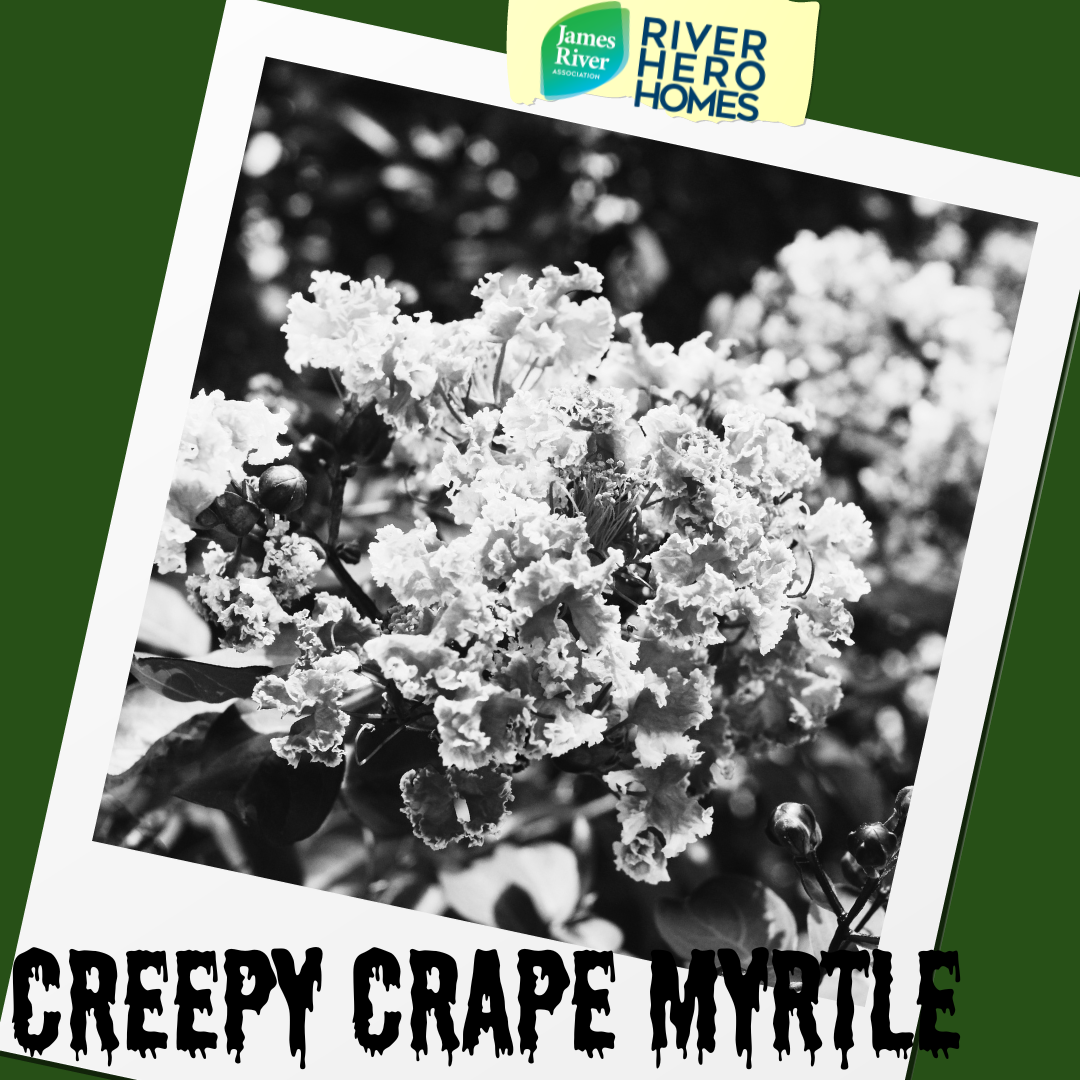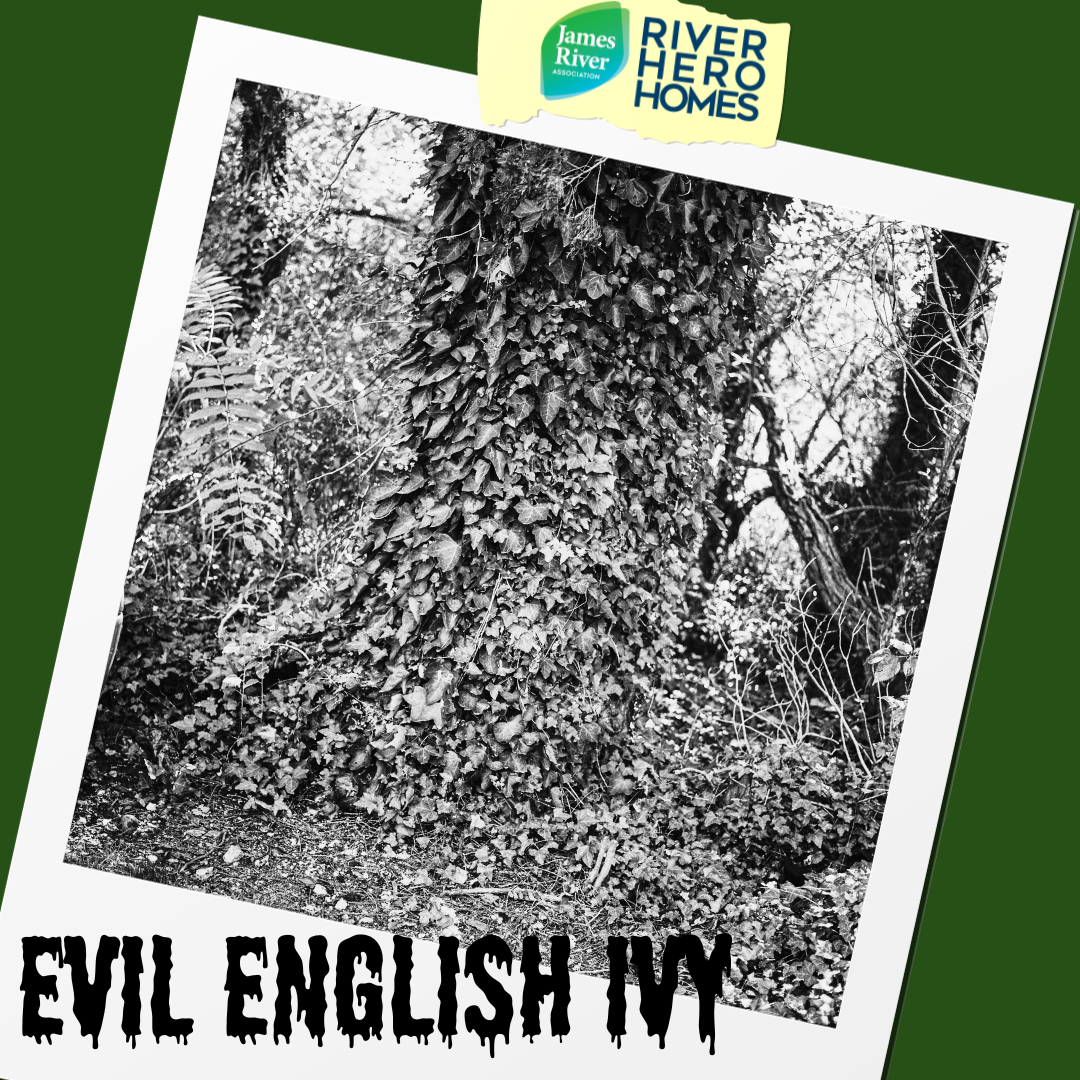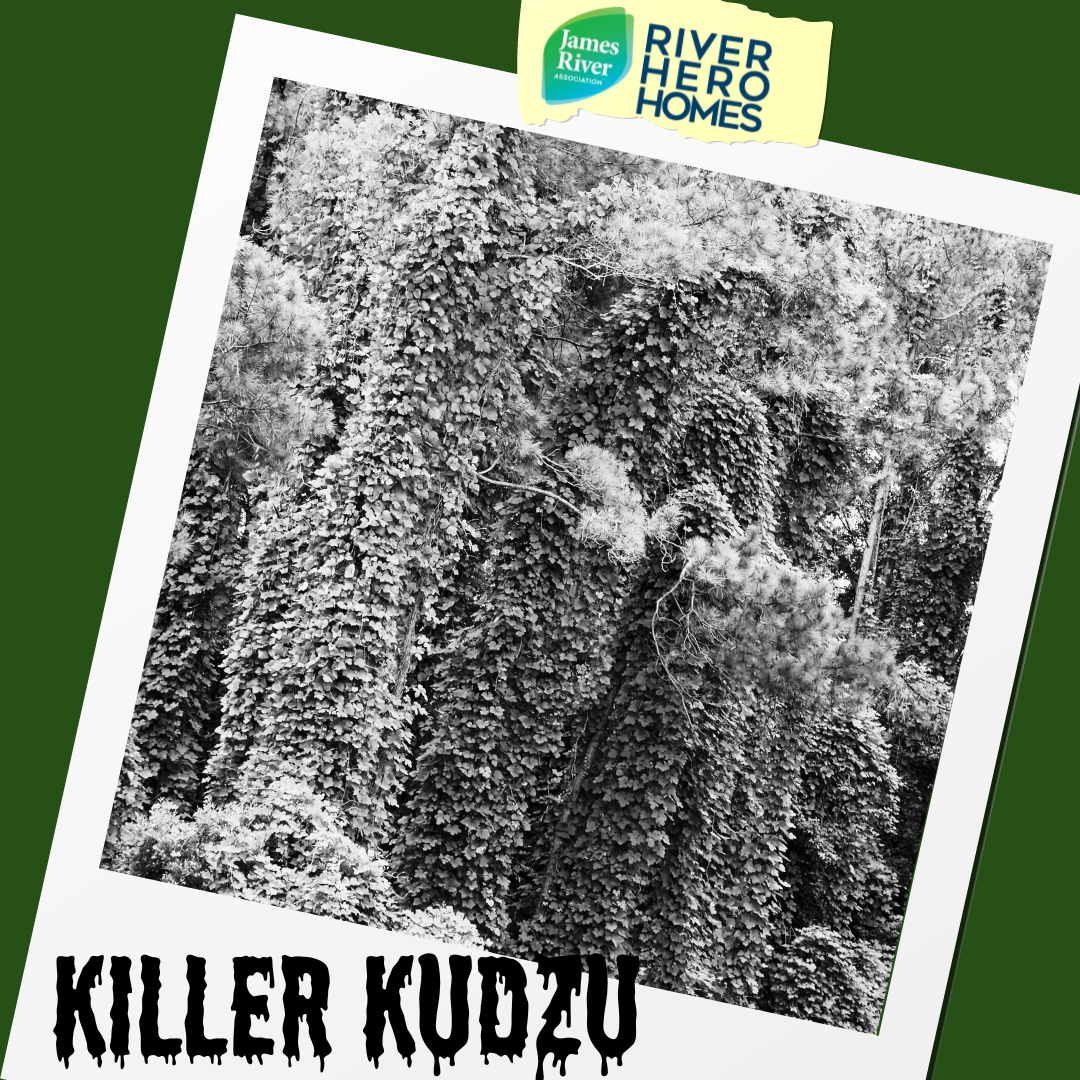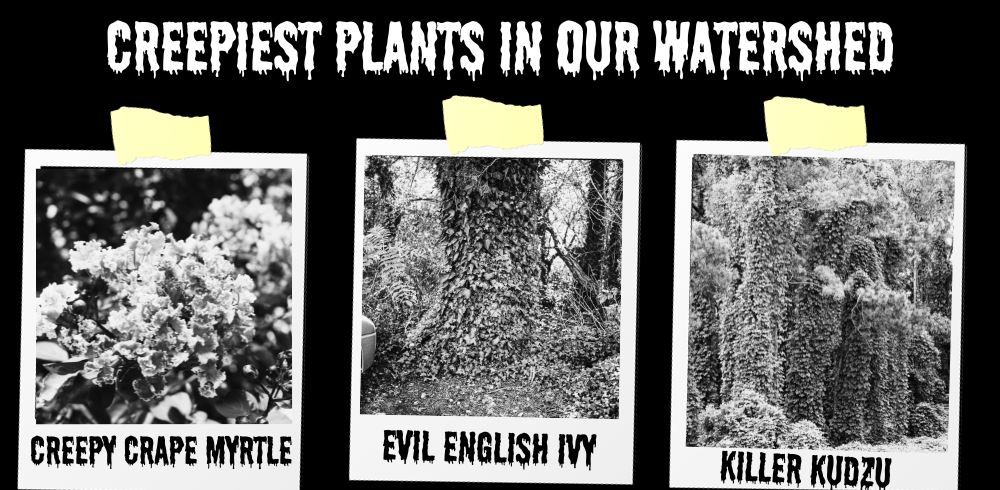We are taking advantage of celebrating River Hero Homes Month and Halloween in the same month and present some of our picks of the creepiest plant species in our watershed! In case you missed our weekly social posts, here are our creepy picks:
Crape Myrtle
Crape myrtles, known for their colorful summertime flowers, are prevalent in landscapes across Virginia but did you know they are not native to North America? Not only are Crape myrtles not native and provide little ecological value, but they are also susceptible to Crape myrtle bark scale. Crape myrtle bark scale emerged in Chesapeake, Virginia a few years ago and is infecting Crape myrtles as it spreads across Virginia. Bark scale is a pinkish-scale insect that produces a layer of whitish-gray waxy material that thickens as the scale matures. It also produces honeydew, which supports the growth of sooty mold on trunks and branches. Trees infested with bark scale have a spooky appearance. Do not plant new crape myrtles and consider replacing existing ones with native Eastern redbuds (Cercis canadensis), Flowering dogwoods (Cornus florida), Sweetbay magnolias (Magnolia virginiana), and White fringreetrees (Chioanthus virginicus)

English Ivy
English ivy (Hedera helix) is a non-native woody vine found in landscapes and natural areas across Virginia. If not properly maintained in landscapes, it becomes invasive. It outcompetes native herbaceous plants and threatens the health of trees it grows up. This creepy vine should be removed from gardens and landscapes immediately.

Kudzu
Kudzu is one of the creepiest plant species in Virginia. Kudzu is an aggressive vine that creeps along the ground and covers everything in its path, making it all but impossible for native vegetation to grow. If this creepy vine is growing in your yard, remove it immediately before it spreads.


